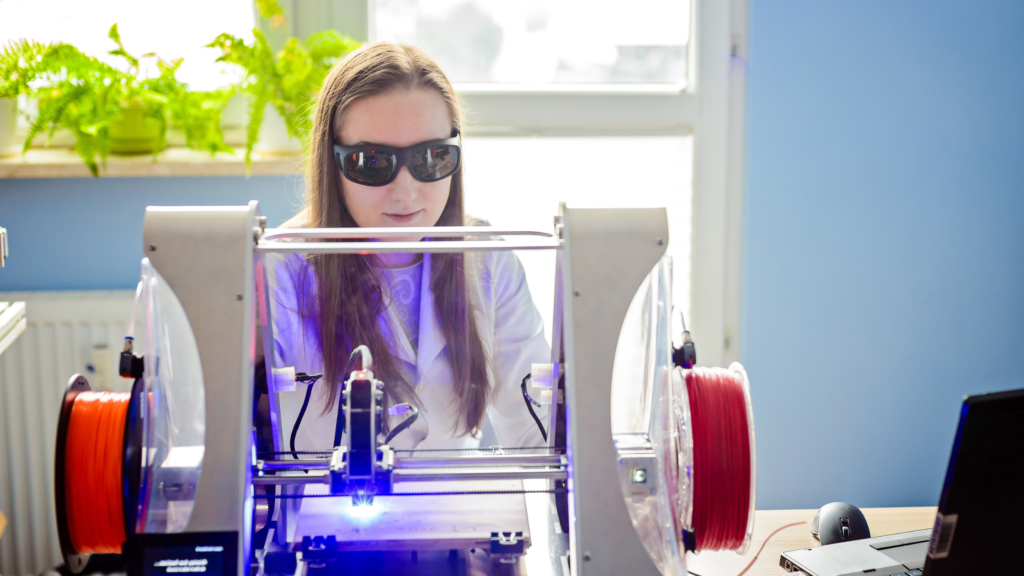How to Avoid Common Mistakes When Buying a Laser Engraver
Laser engravers have become increasingly popular tools among hobbyists, creative professionals, and small business owners alike. With the ability to personalize products, craft intricate designs, and expand into custom fabrication, they’ve opened doors to a new wave of DIY entrepreneurship and artistic innovation. However, this surge in popularity has also led to a growing number of first-time buyers rushing into purchases without fully understanding what they’re getting into.
Too often, people rely solely on promotional claims, overlook important specifications, or fail to align their choice with the type of work they plan to do. These missteps can result in purchasing machines that are underpowered, incompatible with intended materials, or difficult to maintain. Instead of focusing only on features and price tags, it’s essential to understand the most common pitfalls buyers face. Knowing what to avoid can be just as critical as knowing what to look for—especially when investing in equipment that impacts quality, safety, and long-term value.
Understand Your Needs First

Before comparing features or prices, take time to evaluate what you truly need from a laser engraver. Many mistakes come from overestimating or underestimating project demands. Clarifying your goals, materials, and workspace leads to smarter, more sustainable decisions.
For a more structured approach, check out How to Choose the Best Laser Engraver in 2025, which outlines key considerations and feature comparisons.
Define Your Project Goals
Not every laser engraver is built for the same purpose. Start by outlining your core objectives:
- Personal hobby vs. business use: If you’re experimenting for fun, a compact entry-level machine might suffice. But for a business, reliability, consistency, and volume capacity become non-negotiable.
- Occasional engraving vs. production work: Occasional users can compromise on speed or automation. High-volume production requires durability, repeatability, and faster cycle times to keep up with demand.
Know Your Material Types
The materials you plan to engrave play a key role in choosing the right laser type. For instance, wood, acrylic, leather, and glass are best handled by CO₂ lasers, known for their versatility with organic and non-metal materials. If you need to mark metals or harder surfaces, a fiber laser is more suitable. Using the wrong type of laser can lead to poor results—or worse, damage to both the material and the machine.
Space and Power Requirements
Practical setup considerations are often overlooked until it’s too late. Laser engravers can range from compact desktop units to large industrial machines, and their physical size should match your available workspace. Just as important is ensuring your electrical setup can support the machine. Some units require dedicated circuits, and adequate ventilation is essential for safe operation, especially when dealing with fumes from synthetic materials. Planning these logistics upfront will help avoid expensive adjustments later on.
Don’t Fall for Marketing Hype
Technical specs may look impressive on paper, but not everything that sounds good translates into real-world performance. Marketing language often oversimplifies or exaggerates capabilities, leading buyers to focus on numbers that don’t reflect practical use. It’s important to separate essential features from attention-grabbing terms that offer little real value.
If you’re trying to sort out which specs actually matter and which are just noise, this 2025 buying guide breaks down what to focus on and what to ignore.
Laser Power Ratings Confusion
One of the most misunderstood specs is laser power. Many manufacturers list the input wattage, which refers to the power the machine draws—not the actual power delivered by the laser. The output wattage is what determines cutting or engraving performance, and it’s often lower than what’s advertised.
More power doesn’t always mean better results. For fine engraving or detailed work, too much power can cause burning or lack of control. Choosing the right power level should depend on the materials you’re using and the precision your projects require.
Misleading Speed Claims
Speed specs are another area where numbers can mislead. Some engravers advertise very high maximum speeds, but these are often unattainable during normal operation. Engraving complex patterns or working on dense materials will naturally slow the process down.
Detail and accuracy matter just as much as speed. Machines optimized only for fast movement may sacrifice sharpness or consistency, especially when dealing with intricate designs or small-scale projects.
Ignoring Software Compatibility
Software often gets overlooked, but it’s a critical part of your engraving workflow. A machine might be powerful, but if the software is clunky or unintuitive, your productivity will suffer.
Make sure the engraver supports common file formats like SVG or DXF and is compatible with your operating system. Ease of use, regular updates, and available tutorials can make a significant difference—especially if you’re new to laser engraving.
Overlooking Safety and Maintenance

Many buyers overlook safety and maintenance, focusing only on specs. But without these essentials, even a great deal can lead to long-term problems. A reliable laser engraver must protect users and be easy to maintain.
Missing Safety Features
Cheaper models often leave out essential safety elements, putting users at unnecessary risk. Without proper safeguards, even a small error can result in damage or injury. Some of the most important safety features include:
- Protective enclosures to contain laser exposure
- Interlocks that stop the laser when the cover is opened
- Emergency shutoff switches for immediate power cut-off
- Fume extraction systems to handle toxic gases from materials like acrylic or leather
These aren’t extras—they’re necessities for safe, responsible operation, especially in enclosed or shared spaces.
Neglecting Maintenance Requirements
Laser engravers require ongoing care to function properly. Lenses can collect debris, which affects precision. Misaligned components may lead to uneven results, and cooling systems must be cleaned regularly to prevent overheating.
Neglecting these tasks shortens the machine’s lifespan and reduces quality over time. It’s also worth factoring in the availability and cost of replacement parts. Choosing a model with accessible design and widely supported components will make long-term maintenance much easier and more affordable.
Budgeting Beyond the Machine
The price tag on a laser engraver is just the starting point. Many first-time buyers underestimate the total cost of ownership, which includes accessories, setup, and ongoing learning. Planning for these extras can help you avoid unexpected expenses and get the most out of your machine from the beginning.
Hidden Costs and Accessories
To operate your engraver safely and effectively, you’ll likely need more than what comes in the box. Some common additional costs include:
- Exhaust systems to manage fumes and smoke
- Rotary attachments for cylindrical objects
- Protective gear, such as laser safety glasses
- Software licenses or upgrades beyond basic versions
- Training or tutorials, especially for advanced use
For example, if you’re considering a popular option like Glowforge, this 2025 review outlines which accessories are essential and where the machine might fall short depending on your needs.
Underestimating Learning Curve
Using a laser engraver isn’t always plug-and-play. Many systems require a solid grasp of design software and machine settings. It can take time to become confident with layout tools, material settings, and troubleshooting.
Access to tutorials, forums, and user communities makes a big difference, especially for beginners. Machines with active support groups or learning resources will save time and reduce frustration as you build your skills.
Where to Buy Matters
Choosing the right seller is just as important as choosing the right machine. Two engravers may look identical on paper, but the buying experience—and the support that follows—can vary drastically. If you’re considering mainstream options, the Glowforge Review in 2025 offers a balanced look at one of the most talked-about models, including its strengths and limitations.
Avoid Unknown or Unsupported Brands
It’s tempting to go for cheaper or lesser-known brands, but this often comes with hidden risks. Without a strong customer base or detailed user feedback, it’s harder to gauge long-term reliability. Support may be limited or nonexistent.
You also face the possibility of discontinued parts, outdated software, or no repair options. Machines with an established community and accessible support network offer better reliability and easier troubleshooting.
Check Warranty and Return Policies
A clear, reliable warranty is a safety net that should never be overlooked. Look closely at what’s covered—parts, labor, or software—and how long the coverage lasts. Pay attention to who handles repairs and how quickly issues are resolved.
Watch for vague language or exclusions buried in the fine print. If a seller avoids sharing return policies or offers very short warranty periods, it’s usually a red flag. Always choose transparency and accountability when making a significant purchase like this.
Conclusion
Buying a laser engraver is a significant decision that goes beyond comparing specs or chasing the best deal. Start by understanding your specific needs, the materials you’ll use, and the space you have. Be cautious of marketing claims and look closely at safety features, software, and long-term maintenance. Don’t overlook the importance of reliable support, clear warranties, and trusted sellers. Taking time to research, ask questions, and plan your budget will help you avoid common mistakes. A well-informed choice not only protects your investment—it also sets you up for smoother, more successful engraving projects ahead.

